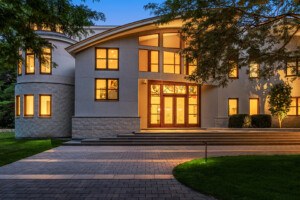Who Should Be Able to Live Where in Boston?
John Barros is the new Chief of Economic Development for the City of Boston, overseeing tourism, jobs and employment, and real estate and business development. Most importantly, he’s now in charge of the Boston Redevelopment Authority (BRA), the city’s urban planning and economic development agency.
Last week, Barros took WGBH News’ Phillip Martin on a tour of Dudley Square in Roxbury and the Seaport District on the South Boston Waterfront. Inarguably, these two neighborhoods are on the cusps of the greatest change in the city.
In this Greater Boston piece, Barros outlines the challenges facing the two neighborhoods but (inadvertently) raises an important question, one facing every person who lives or who wants to live in Boston, or in any major U.S. city in the 21st century: Who gets to live where?
In his video tour with WGBH’s Martin, Barros points to the Whittier Housing Project on Tremont Street near Northeastern University. “Most of it will be torn down and built new with the commitment to not displace one resident; everyone will have the opportunity and a unit will be provided for them to come back,” Barros says.
At Whittier, the existing low-income, subsidized housing will be demolished and replaced with 200 higher-quality but affordable units. Another 200 new apartments will be built that will be priced to be affordable to middle-income renters.
In Dudley, the renovation of the city’s Ferdinand Building, where 500 Boston Public School employees will be relocated, will hopefully kick-off the renewal of a neighborhood that’s often busy but has also suffered the ill effects of urban renewal.
When they visit the Seaport District and look at the gleaming towers of luxury housing under construction, Martin seems confused by what Barros is saying, that people other than the rich should be able to live there, too.
“… That view?” asks Barros.
“That view.” Martin responds.
“Absolutely,” says Barros, somewhat emphatically.
“Middle-income people?” Martin asks, skeptically.
“We need to make sure that all neighborhoods are accessible in the city; middle-income families, different income ranges should be able to afford that view,” Barros says.
And with that one sentence, John Barros opened up the proverbial can of worms, to be sure. “Who gets to live where?” is a provocative question, but there is legitimacy in it.
The city of Boston is undergoing a Building Boom, but it’s a boom benefiting low-income families through the construction and renovation of subsidized housing, and the rich through the construction and renovation of luxury housing.
Now Barros, whose newly created position includes purview over the BRA, envisions the middle-income living in the Seaport—and anywhere they and anyone else want to live in the city, something that’s never really been considered or even talked about previously. It’s a rather impractical idea and a radical one at that, coming from the planning and development chief for Mayor Marty Walsh’s administration.


